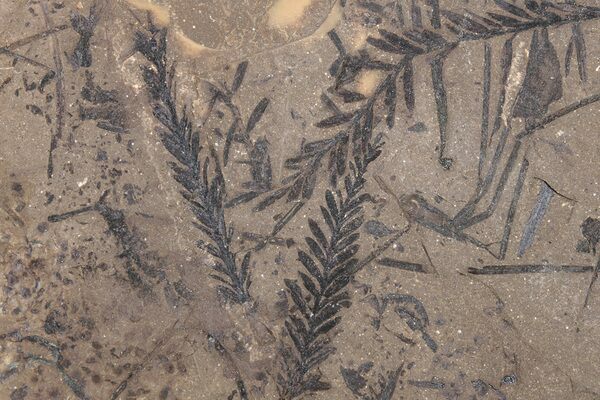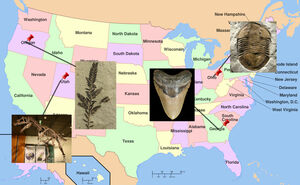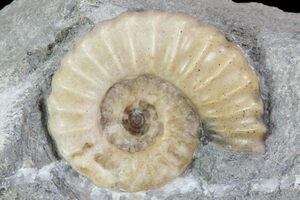Petrification vs Fossilization: What Is The Difference?
What Makes The Trees Freeze And Turns Bones To Stone?
One of the best resources paleontologists have for examining the nature of life in Earth’s prehistory are the various remains left over in the fossil record. These take the form of fossils, a broad term used to describe any preserved remains of something that once lived. These can take the form of body fossils, firsthand remains of a deceased organism, for example fossilized bone. However they can also be found as trace fossils, which are indirect remains of an organism. Other types of fossils exist, including mold fossils, which are the imprinted space left behind by an organism that is then preserved in stone. Meanwhile, a cast fossil is a fossil that forms when the space left behind by a mold fossil is filled in with other minerals, leaving behind a natural stone replica of the original organism’s shape.
Petrification is the geological process in which organic material is turned to stone slowly over time. This process is involved in many forms of fossilization, and leaves behind many stunning and beautifully preserved fossils. These can include petrified wood, sometimes preserved in entire forests, as well as amber-preserved insects and other small lifeforms.
Petrification is not always the method by which fossils are created, however. Mold and cast fossils for example are created after the original organic material has entirely decayed away. Many body fossils are made in this way as well, with mineral filling the space leftover by bone. However petrification is one of the more common forms of fossilization for very large organisms like trees.
How Do They Do It: The Processes Of Petrifying
Fossilization, as a term, refers to any process by which organic material leftover by a once-living organism is preserved after the organism becomes deceased. Petrification can be classified as a form of fossilization, and is specifically the process by which organic material is slowly and holistically turned to stone throughout the entire structure of the organism.
When an organism is petrified, it becomes stone slowly on a cell by cell basis. This is due to the flow of groundwater in the sediment in which a petrified organism is preserved. Water with a high concentration of minerals (called “hard water”) flows through the ground and the remains of the deceased organism.
Over time, as the organic remains decay slowly, the water flows through the gaps that remain, and fill them with minerals. After thousands, if not millions of years, this leads to complete petrification of the organism, which can preserve astonishing detail down to a cellular level.
The best chances for this to happen are in cases where the organism, for example a tree or forest, are covered very quickly all at once with very fine sediment, trapping the remains in an oxygen-poor environment. This might not be very nice for the organism at the time, but the lack of oxygen means that organisms that would speed up the decomposition of the remains are less likely to destroy them before they can fossilize. And because the resulting decomposition happens much slower than if it were in an oxygenated environment, hard water can gradually change the cells to stone in a much more precise manner.
The extreme length of time and precise preservation of organic remains leads to petrified fossils that preserve internal structures like growth rings and cell walls in exquisite detail.
Since the process of decomposition happens at different rates for different parts of an organism, and because the mineral content of the water changes over time, the mineral content in petrified fossils are often varied, leading to striking patterns and colorations.
Fascinating Fossils: Permineralized, Petrified, Or Neither
Permineralization is the process by which hard water fills in the spaces that existed in once-living organisms, and is the driving force behind petrification. It is also one of the most common forms of fossilization for both animals and large plants. Petrified dinosaur bones have allowed scientists to create detailed histological studies of the extinct reptiles. Petrified wood has pushed forward the field of paleobotany as well as serving as artistic medium and inspiration for many, with its striking variations in colors and patterns.
However, permineralization is not the only process by which fossils are made, simply one of the most detailed. It takes very fortunate circumstances for permineralization, and therefore petrification, to occur.
Compression fossils are usually created when something small is entombed very quickly and compressed between the many layers of sediment. The resulting fossils are typically flat and 2-dimensional, but preserve fascinating profiles of how organisms would likely be articulated in life. These fossils also have the potential to create natural, aesthetically pleasing compositions, with positive/negative fossils that reflect themselves in the stone once split.

Metasequoia fossils from the Tranquille Shale in British Columbia are an example of a compression fossil.
Many fossils are preserved as impressions, or molds. These can create fascinating pictures of organisms trapped in very short periods of time, as with many fossils of this nature it is likely that they were entombed while still alive. Mold fossils are created when an organism decays faster than the organic content can be replaced by minerals from groundwater. This leaves an empty impression of the organism, but doesn’t preserve internal detail. When a mold fossil is filled by hard water, the resulting mineral is called a cast fossil. Cast fossils are different from petrified fossils because they only preserve the outermost layer of detail.
Trace fossils, like footprints, coprolites (fossilized dung), tail trails, and skin or foliage impressions, are another type of fossil that are not permineralized. This is because they are not actually organic remains at all, or at least not directly. Trace fossils are any indirect remains of a living organism, and are preserved in a similar manner to most fossils. They get covered by a layer of sediment, and become preserved in the stone as it compresses and hardens. These fossils are some of the hardest to spot, and are highly susceptible to natural forces such as erosion, so they are not very common.
Fossils of all kinds are fascinating, and not just because they are representative of the story of life on Earth from beginning to the present. They are also our only window into that story, and without them we would have barely any clue as to how the fantastical diversity of life on Earth came to be. Petrification is one of the most detailed forms of fossilization, and thanks to it, we know more about the past than we ever could have before.
 Reviews
Reviews







